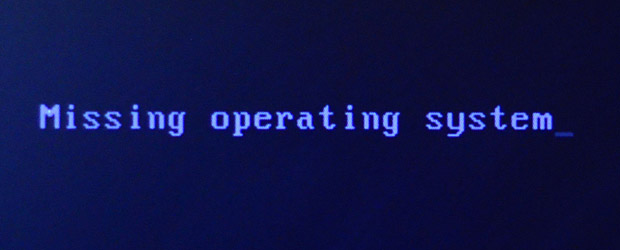
The web is a critical part of the IoT story
In this O'Reilly Radar Podcast: Simon St. Laurent discusses the web's potential, and Tom Greever chats about experience design.
Simon St. Laurent, O’Reilly’s strategic content director for our web space and co-chair of our Fluent Conference, recently launched an investigation looking into the web’s potential to change not only computing, but the world in general. For this podcast episode, I caught up with St. Laurent to talk about the timing, what he’s exploring, and why the web isn’t dead. He said that in some ways, it has always been the right time to launch this investigation — after all, the web has continued to grow amidst market crashes and the dot-com bust — but noted the driving factors behind the health of the web are becoming more clear:
“Something different is happening, though, in the last few years. I think it’s rooted in the legitimization of JavaScript as a programming language. It used to be seen as this annoying, accidental scripting language. Doug Crockford and a lot of others demonstrated that if you looked at JavaScript in the right context, context that’s more functional, that is less obsessed with classical orthodox object-oriented development, that JavaScript is both amazingly flexible and incredibly powerful. That brought in a whole new generation of people to work on things.
“The concept of the web platform arose, which I like as a phrase to keep me from saying HTML5, CSS, and JavaScript over and over, but which gives people the idea that the web is a platform like Windows or the Mac, where you can really control thing pixel by pixel. Jeremy Keith has done a great job of explaining why that isn’t true, but there are a lot of people who come in expecting to be able to program on the web like they do for any other platform. They’re great JavaScript programmers frequently, but we need to be telling the story of the broader context and how all these pieces fit together for the long-term health of their projects as well as the web as a whole.”

Wouldn’t it be fun to build your own Google?
Exploring open web crawl data — what if you had your own copy of the entire web, and you could do with it whatever you want?
For the last few millennia, libraries have been the custodians of human knowledge. By collecting books, and making them findable and accessible, they have done an incredible service to humanity. Our modern society, culture, science, and technology are all founded upon ideas that were transmitted through books and libraries.
Then the web came along, and allowed us to also publish all the stuff that wasn’t good enough to put in books, and do it all much faster and cheaper. Although the average quality of material you find on the web is quite poor, there are some pockets of excellence, and in aggregate, the sum of all web content is probably even more amazing than all libraries put together.
Google (and a few brave contenders like Bing, Baidu, DuckDuckGo and Blekko) have kindly indexed it all for us, acting as the web’s librarians. Without search engines, it would be terribly difficult to actually find anything, so hats off to them. However, what comes next, after search engines? It seems unlikely that search engines are the last thing we’re going to do with the web. Read more…

The Once and Future SVG
Plugin-free vector graphics are now easier than ever before

Thirteen years ago, in 2001, the World Wide Web Consortium (W3C) finalized the specification for Scalable Vector Graphics, version 1.0. A few months later, in early 2002, O’Reilly published the original SVG Essentials, describing both the basics and the wonderful potential of SVG. An open standard for vector graphics, with support for scripting and animation, was an area of boundless possibility.
From some perspectives, not much has changed. The official SVG specification is still at version 1.1, which was released in 2003 and edited in 2011. Neither update introduced new features to SVG, instead focusing on improving clarity and consistency in the details.
In practice, however, SVG has changed considerably. There are numerous tools for creating SVG, both full-featured graphics programs and online widgets. Most importantly, nearly every web browser out there treats SVG as a first-class citizen (some outdated mobile and Internet Explorer versions being exceptions), displaying SVG as an interactive part of your document with no need for plug-ins.

Isomorphic JavaScript with LazoJS
In search of the holy grail, again

When I started at @WalmartLabs I was placed on team that was tasked with creating a new web framework from scratch that could power large public facing web sites.
I recently had the opportunity to speak about this experience at OSCON. The title of the talk was “Satisfying Business and Engineering Requirements: Client-server JavaScript, SEO, and Optimized Page Load”, which is quite the mouthful.
What the title attempted to encapsulate and the talk communicated was how we solved the SEO and optimized page load issue for public facing web sites while keeping UI engineers, myself included, happy and productive. Let’s take a look at how we achieved this with the creation of a new isomorphic JavaScript web framework, LazoJS.

Be a squeaky wheel, but always bring oil
Camille Fournier on becoming a “multiplier” — and why multipliers are more effective than managers.
There are times when we all wish we could clone ourselves so we could get more done at work. In a Velocity New York 2014 keynote, Camille Fournier, CTO at Rent the Runway, presented an alternative, practical solution, that she argued is far more effective (not to mention feasible): become a “multiplier” rather than a manager.
Technical skills are important, she said, but they’re not ultimately the bottlenecks you experience later in your career — eventually, time and focus become the main hurdles. To overcome these hurdles, Fournier argued that you need to take a step beyond managing and focusing on creating additive value, and focus on multiplying your value by increasing the effectiveness of the people working around you.


